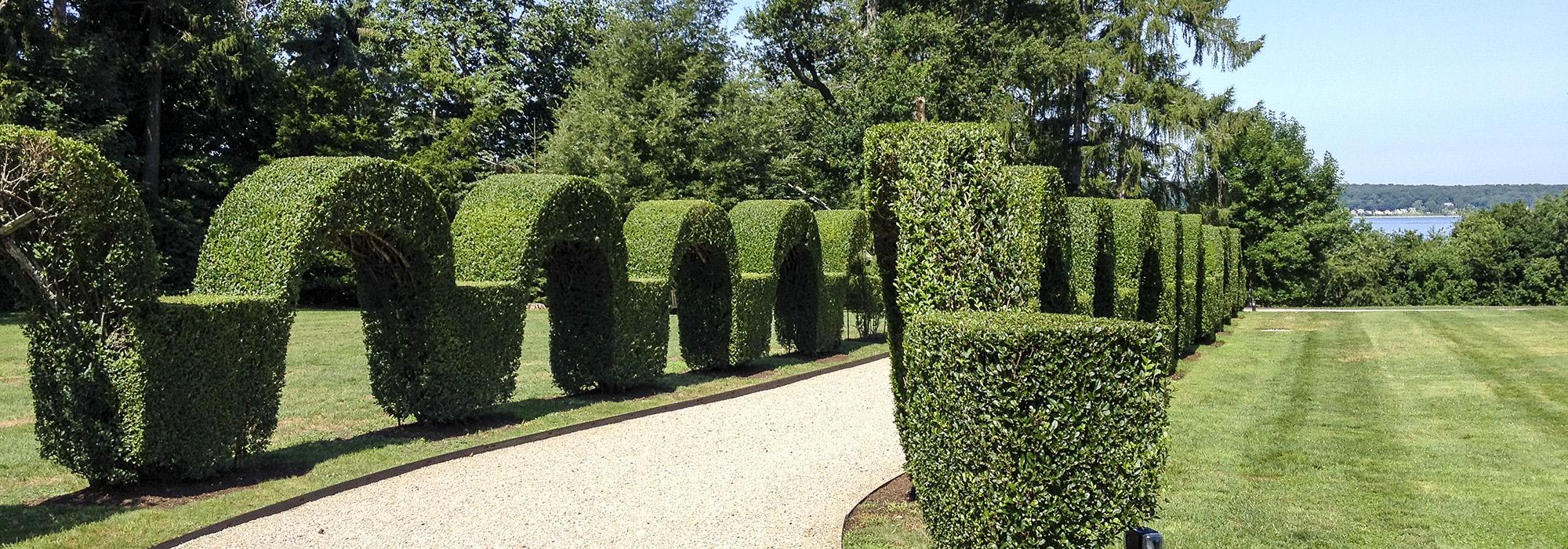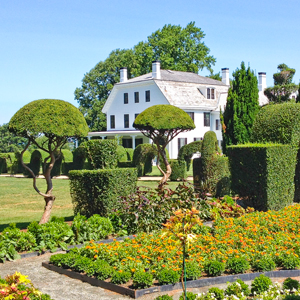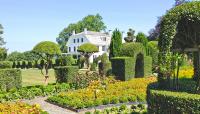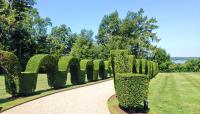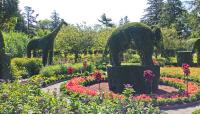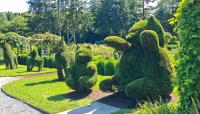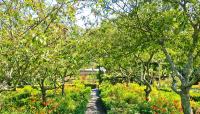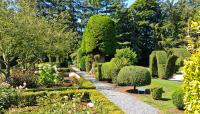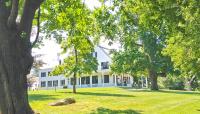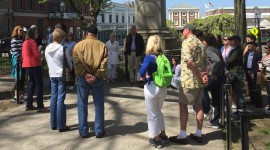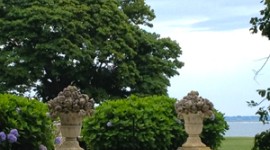Overlooking Narragansett Bay, this topiary collection is among the oldest and furthest north in the United States. In 1872 Thomas Brayton purchased a white clapboard residence and farm buildings situated on a seven-acre estate and pasture. In 1905 Brayton hired José Carreiro, an immigrant from the Azores, to create and care for flower and vegetable gardens amidst orchards and a network of grape and gourd arbors. Between 1912 and 1945 Carreiro experimented with California privet, propagated in the estate greenhouse, and developed a system of training these—without the support of frames—into life-sized animal shapes. In 1939 Brayton died and left the property to his daughter Alice, who gave the estate its name. That same year, George Mendonça began working with Carreiro on the topiary and gardens, later marrying his daughter. Carrying on the tradition after Carreiro’s death in 1950, Mendonça expanded the gardens to include more than 80 topiaries. In the later years, frame supports began to be used and yew and boxwood were added to the collection of privet.
Today, bordered by mature conifer and magnolia and situated within a pasture, themed garden rooms accessed by a system of axial paths are flanked by densely planted rose, vegetable, and cutting gardens. Near the house and main entrance, the topiary retains a more formal style of figurative and geometric shapes while later plantings tend to be trained into abstractions. Brayton bequeathed the estate to the Preservation Society of Newport County in 1972 and Mendonça continued his work until 1985.



